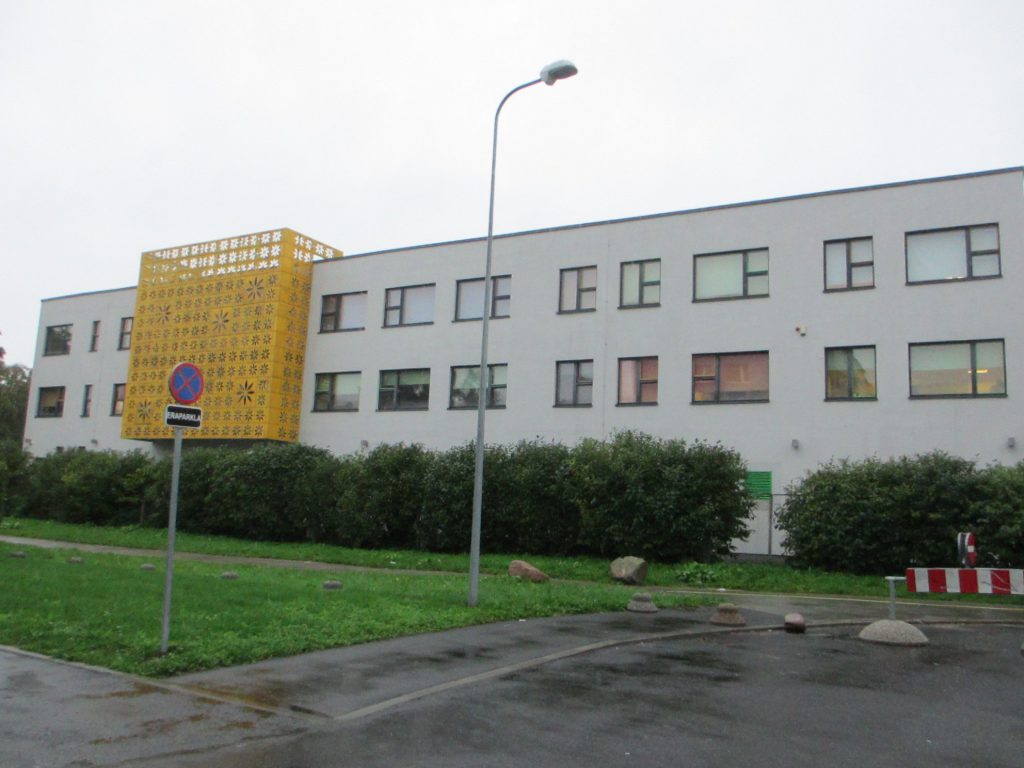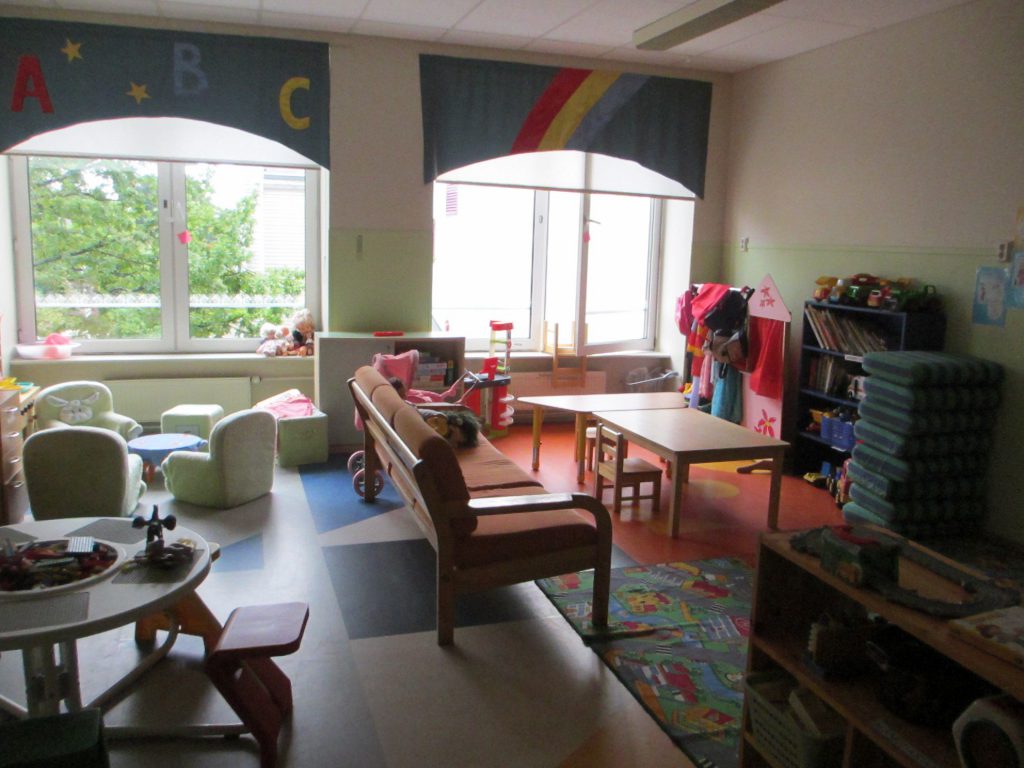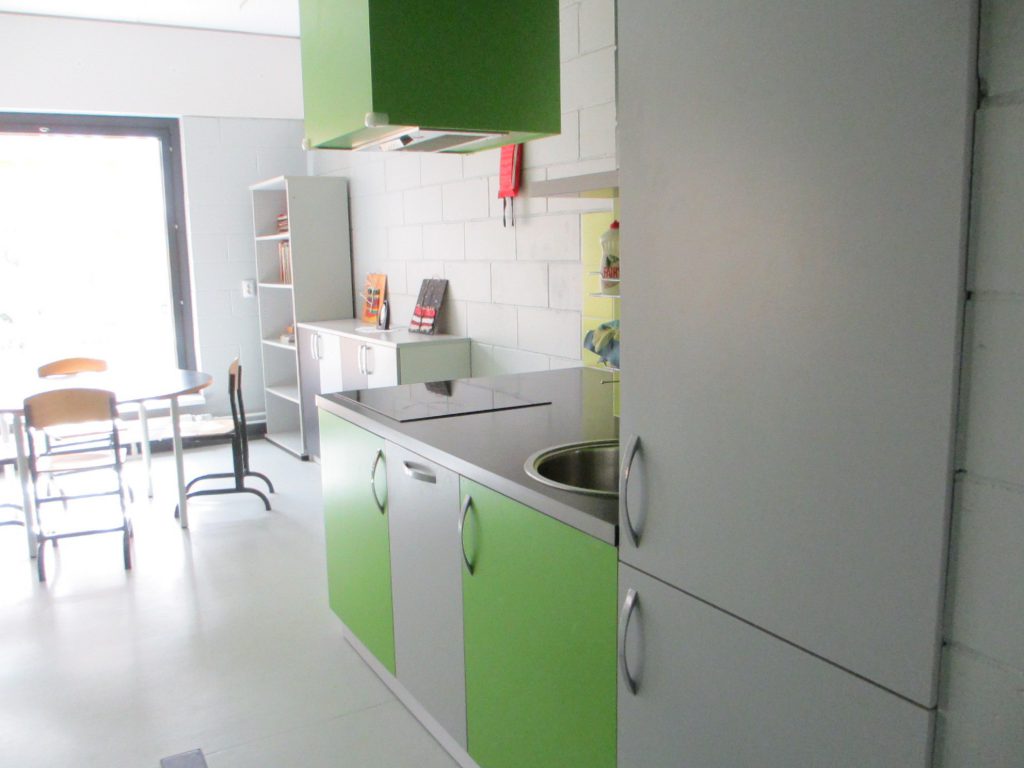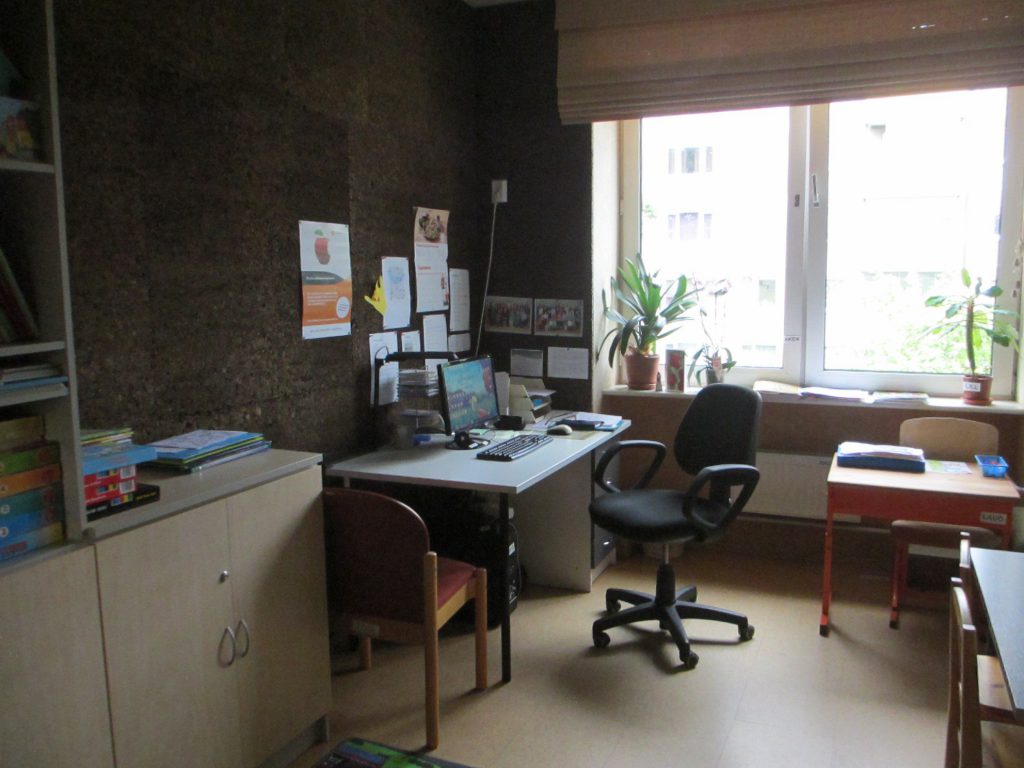They were waiting for me here. I was lucky to find a school earlier, and I emailed them in advance. They invited me and scheduled the time.
The school is located near to the city center. It is an educational center and it comprises a school and a kindergarten. In one section, there study children with hearing loss, in another those with vision loss, and in the third those with speech loss.

The school impresses one with its large size, well-considered design and cleanness from the first glance. Wide corridors, light walls,
large windows, and a spacious lift with a convenient entrance.
The school also operates according to the bilingual method. Here you can read more detailed descriptions of this and other most widespread teaching methods.
However, at lessons with a deaf teacher they only use the sign language.
In the end, I managed to see several types of lessons.
The first lesson was in the second grade. It was taught by a teacher with hearing loss, she had two deaf children in her class. Thus, she only used signs. It was a lesson familiarizing children with school equipment. During those games that required speech, children fingerspelled first, and then showed the sign.

The second lesson was held in the sixth grade. It was taught by a hearing teacher, who knew the sign language. There was one (!)
child in the class. The Estonian language. Signs and sound imitation. They don’t make children speak, only try to elicit voice. Teachers want children to feel it themselves.
The third lesson was in the ninth grade. It was taught by a hearing teacher with a sign language interpreter: those teachers who don’t know the sign language and don’t want to learn it are provided with the services of a sign language interpreter for the lessons. It was geography, the theme was “The Arctic and Antarctica.” Those who were at the internship with me must understand my interest to this lesson. Although, the grade was a high one, the eighth. From the outside, the lesson looked like it was held in an ordinary school, but the communication between the teacher and the students was ensured by the interpreter.
And it’s the most incredible feeling… That you are at an ordinary school. It’s just much quieter here and students communicate in a different way. Otherwise, there’s nothing new here: contests, exhibitions, lessons and homeworks.

And now attention! The school has 27 students. It’s the whole school. It’s an immense educational center that looks like a labyrinth. And only 27 children with hearing loss study here. “We don’t have more,” say the teachers with a helpless gesture. A class usually has only 2-3 children, and there are classes with only 1.
The school itself is unbelievable. There are plenty of workshops, a study kitchen, spacious classrooms, a swimming pool, a physiotherapy room, game rooms and a gym.
Children’s bedrooms look like hotel rooms. Each of them has two beds, two desks, a separate bathroom and a toilet. There’s enough place to dance. And all these rooms are empty. All the students live in Tallinn and go home after the lessons.
For those children who wait for their parents at school till evening there is a separate hall for studies. There are tables and couches there, and a small kitchen with an electric cooker, kettles, a microwave oven and dishes so that everyone could have a snack him- or herself.

All the children have musical lessons. There is a talented teacher working at the school, and she can play at least 10 instruments! She also teaches all the children to play musical instruments.
The auditorium, where all the events and festivities are held, is equipped with a special floor covering, which transfers vibration very well. The walls and the ceiling of almost all the rooms are covered with special material, which helps to avoid reverberation (reflection of sound from the walls) and eases sound perception.
All in all, there’s everything there. Only, there are almost no students…)
At the school, children learn not even two languages, but three! Estonian (their native language), English (from the 6th grade, the first foreign language) and Russian (from the 9th grade, as an elective subject).

Unlike the school in Vilnius, there are almost no children with cochlear implants, though the state also finances both implants for every child.
After school, children must take an exam in Estonian and other subjects at their choice. They have the same rights concerning the examination as everyone else. There is a sign language interpreter present at the exam, and he or she sits together with the board and interprets organizational issues. Everyone also enters universities at the same terms.
The main problem is acute shortage in sign language interpreters. The department at the Tallinn university, where they majored before, has recently been closed. In two years several last sign language interpreters will graduate from the university. All the rest of them will have to study themselves.
Unlike in Lithuania, what most of the children study here is IT, web design and programming.
Everyone finds a job. Teachers say that children integrate into the modern world easily, find hearing friends and lead pretty much ordinary lives.
One wonders then… Why not transport a couple of schools and several dozens of teachers to Tallinn?=)
A school like this shouldn’t be standing idle…
Seriously though, I’m impressed. Not only the school is marvelous, but also the unparalleled mutual understanding, the happy teachers and the careful attitude.
The school’s address: Estonia, Tallinn, Ehte, 7. From the city center, take bus 40.
P.S. Unlike Lithuania and Latvia, there are significantly fewer Russian-speakers in Estonia. We almost exclusively spoke English at the school.
